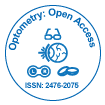Autonomic Dysfunction: Understanding Dysautonomia and Its Clinical Implications
Received: 03-May-2025 / Manuscript No. omoa-25-171448, / Editor assigned: 05-May-2025 / PreQC No. omoa-25-171448, / Reviewed: 17-May-2025 / QC No. omoa-25-171448, / Revised: 23-May-2025 / Manuscript No. omoa-25-171448, / Accepted Date: 29-May-2025 / DOI: 10.4172/2476-2075.1000321
Introduction
Autonomic dysfunction, also referred to as dysautonomia, represents a spectrum of disorders arising from abnormalities in the autonomic nervous system (ANS), which regulates involuntary physiological processes such as heart rate, blood pressure, gastrointestinal motility, sweating, and pupillary responses. The ANS is divided into the sympathetic and parasympathetic systems, and dysfunction in either or both branches can lead to diverse and often debilitating clinical manifestations. Autonomic dysfunction can occur as a primary disorder, such as in pure autonomic failure, or as a secondary complication of systemic diseases like diabetes mellitus, Parkinson’s disease, multiple sclerosis, or autoimmune neuropathies. Understanding its pathophysiology, clinical spectrum, and management strategies is crucial for improving patient quality of life and reducing morbidity [1-4].
Discussion
Clinically, autonomic dysfunction manifests with multisystem involvement, which can make diagnosis challenging. Cardiovascular manifestations include orthostatic hypotension, tachycardia, and syncope, resulting from impaired baroreceptor reflexes. Gastrointestinal symptoms, such as gastroparesis, constipation, or diarrhea, reflect disrupted parasympathetic control. Genitourinary involvement may present as bladder dysfunction or erectile difficulties, while sudomotor abnormalities cause hyperhidrosis or anhidrosis. Pupillary involvement, such as light-near dissociation or tonic pupils, may also occur in certain dysautonomias, highlighting the overlap between autonomic and ocular findings [5,6].
The etiology of autonomic dysfunction is diverse. Diabetic autonomic neuropathy is a common secondary cause, resulting from chronic hyperglycemia-induced nerve damage. Neurodegenerative disorders, such as Parkinson’s disease, multiple system atrophy, and pure autonomic failure, produce progressive degeneration of autonomic pathways. Autoimmune and inflammatory neuropathies, including Guillain-Barré syndrome variants, can transiently or persistently impair autonomic function. Medications, toxins, and systemic infections may also precipitate dysautonomia [7,8].
Diagnosis relies on a combination of clinical evaluation and specialized testing. Cardiovascular autonomic testing, such as tilt-table testing, heart rate variability, and Valsalva maneuvers, assesses sympathetic and parasympathetic responses. Quantitative sudomotor axon reflex testing (QSART) evaluates sweat function, while gastrointestinal motility studies and urodynamic assessments can quantify visceral autonomic impairment. Laboratory investigations and imaging may help identify secondary causes or rule out structural lesions [9,10].
Management of autonomic dysfunction is multifaceted, focusing on treating the underlying cause, alleviating symptoms, and preventing complications. Non-pharmacologic strategies include fluid and salt optimization, physical counter-maneuvers, compression garments, and lifestyle modifications to manage orthostatic hypotension. Pharmacologic interventions may involve midodrine, fludrocortisone, beta-blockers, or prokinetic agents depending on symptom type and severity. Multidisciplinary care, involving neurology, cardiology, gastroenterology, and rehabilitation specialists, is often essential for comprehensive management.
Conclusion
Autonomic dysfunction is a complex disorder with widespread clinical implications, affecting cardiovascular, gastrointestinal, genitourinary, and ocular systems. Early recognition and targeted evaluation are essential for identifying underlying causes, implementing effective management strategies, and improving patient outcomes. While treatment is largely symptomatic, addressing primary etiologies and employing multidisciplinary care can substantially enhance quality of life and reduce morbidity. As research continues to elucidate the molecular and neural mechanisms of dysautonomia, future therapies may offer more targeted and disease-modifying interventions, underscoring the critical importance of continued clinical awareness and investigation of autonomic dysfunction.
References
- Singh AD, Topham A (2003) Incidence of uveal melanoma in the United States: 1973–1997. Ophthalmology. 110: 956–961.
- Singh AD, Turell ME, Topham AK (2011) Uveal melanoma: trends in incidence, treatment, and survival. Ophthalmology. 118: 1881–1885.
- Virgili G, Gatta G, Ciccolallo L (2007) Incidence of uveal melanoma in Europe. Ophthalmology. 114: 2309– 2315.
- Mariani P, Piperno-Neumann S, Servois V (2009) Surgical management of liver metastases from uveal melanoma: 16 years’ experience at the Institute Curie. Eur J Surg Oncol. 35: 1192–1197.
- Rietschel P, Panageas KS, Hanlon C, Patel A, Abramson DH, et al. (2005) Variates of survival in metastatic uveal melanoma. J Clin Oncol. 23: 8076–8080.
- Rajpal S, Moore R, Karakousis CP (1983) Survival in metastatic ocular melanoma. Cancer. 52: 334–336.
Google Scholar, Cross Ref, Indexed at.
- Cerbone L, van Ginderdeuren R, van den Oord J (2014) Clinical presentation, pathological features and natural course of metastatic uveal melanoma, an orphan and commonly fatal disease. Oncology. 86:185–189.
- Mavligit GM, Charnsangavej C, Carrasco CH, Patt YZ, Benjamin RS, et al. (1998) Regression of ocular melanoma metastatic to the liver after hepatic arterial chemoembolization with cisplatin and polyvinyl sponge. J Am Med Assoc. 260: 974–976.
- Frenkel S, Nir I, Hendler k (2009) Long-term survival of uveal melanoma patients after surgery for liver metastases. Br J Ophthalmol. 93: 1042–1046.
- Mariani P, Piperno-Neumann S, Servois V (2009) Surgical management of liver metastases from uveal melanoma: 16 years’ experience at the Institute Curie. Eur J Surg Oncol. 35: 1192–1197.
Citation: Farhan K (2025) Autonomic Dysfunction: Understanding Dysautonomia and Its Clinical Implications. Optom Open Access 10: 321. DOI: 10.4172/2476-2075.1000321
Copyright: © 2025 Farhan K. This is an open-access article distributed under the terms of the Creative Commons Attribution License, which permits unrestricted use, distribution, and reproduction in any medium, provided the original author and source are credited.
Select your language of interest to view the total content in your interested language
Share This Article
Recommended Journals
Open Access Journals
Article Tools
Article Usage
- Total views: 60
- [From(publication date): 0-0 - Nov 18, 2025]
- Breakdown by view type
- HTML page views: 39
- PDF downloads: 21
